Strategies for Effective Wasp Removal Techniques
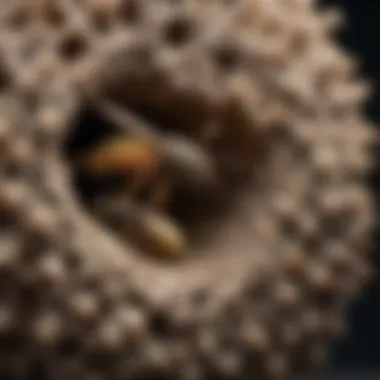
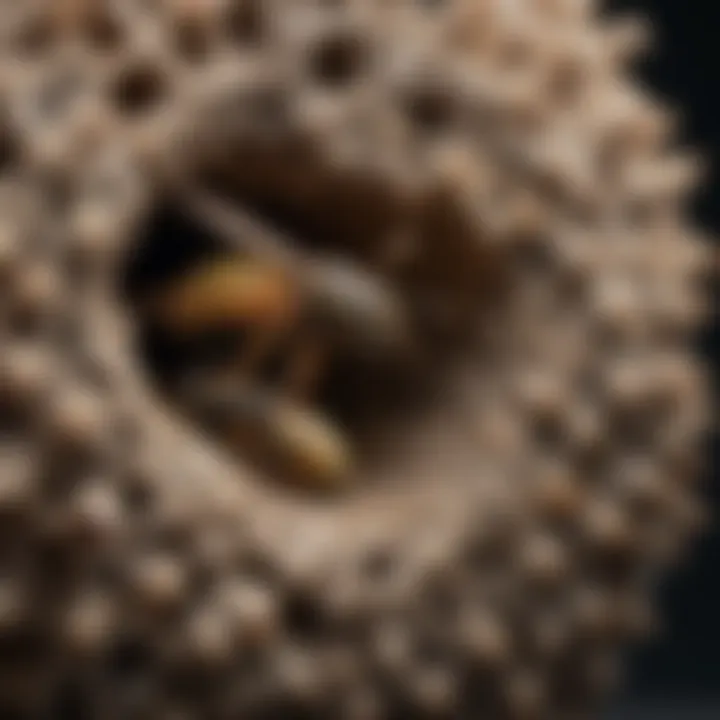
Understanding the Pest
Wasp removal begins with a thorough understanding of the pest itself. Knowing the details about wasps, including their identification and life cycle, is crucial for effective management and removal strategies.
Identification
Wasps can present a challenge due to their varying species and colorations. Common types include the yellow jacket, paper wasp, and hornets. Yellow jackets are often mistaken for bees. They are usually black and yellow with a more elongated body. Paper wasps have long, slender bodies and build umbrella-shaped nests. Hornets are larger, often brown or black with white markings. Recognizing the type of wasp present can influence your approach to removal.
Life Cycle
Understanding the life cycle is essential when dealing with wasps. They typically have a seasonal cycle, originating in the spring. A queen emerges from hibernation, seeking a place to establish a nest. Eggs are laid, and the larvae grow into adult wasps by the end of summer. By fall, the colony is at its peak. After this, most wasps die, except for newly fertilized queens who seek shelter for winter. This knowledge can inform your strategy, particularly in timing your interventions with the seasons.
Pest Prevention Strategies
Prevention is key when addressing wasp issues. This section focuses on how to modify environments and implement physical barriers to deter wasps from nesting.
Environment Modification
Think about your surroundings. Remove food sources that might attract wasps. This includes cleaning up around garbage cans, covering food during outdoor events, and sealing food storage areas. Consider planting wasp-repelling herbs, like mint or citronella.
Physical Barriers
Utilizing physical barriers can provide an effective means of prevention. Screens on windows and doors are essential. You should also inspect your property for potential nesting sites, particularly in sheltered, undisturbed areas. Regularly checking your home and yard can mitigate threats before they escalate.
Control Methods
If wasps have already established themselves, control methods become necessary. Here, we explore both chemical and biological control options.
Chemical Control
Chemical methods involve the use of pesticides specifically designed for wasps. Products like the Ortho Home Defense and Raid Wasp Killer are popular among homeowners. Always read the instructions carefully before application. Utilize them in the evening or early morning when wasps are less active. Safety precautions are necessary when using these substances. Ensure you wear protective gear and follow all label guidelines to minimize risk.
Biological Control
Biological control methods employ natural predators to manage wasp populations. Birds like the blue jay and certain insects can help keep wasp numbers down. Encourage birds and beneficial insects by planting diverse vegetation. Consider promoting natural biodiversity in your garden as a long-term approach.
Implementing these strategies can greatly reduce the likelihood of wasp infestations while minimizing harm to the environment.
Epilogue
In summary, effective wasp removal requires a comprehensive understanding of the pest, thoughtful prevention strategies, and applicable control methods. By integrating these approaches, homeowners can manage wasp populations effectively and safely. Adopting environmentally friendly practices benefits not only your property but also the broader ecological community.
Intro to Wasp Management
Wasp management is a critical topic for homeowners and outdoor enthusiasts alike. With the potential for both nuisance and danger, understanding how to effectively control wasps is vital. This section aims to clarify the complexities involved in managing wasp populations, highlighting their behavior, habitat, and our relationship with them. Educating oneself on this subject not only contributes to personal safety but also enhances overall outdoor experiences.
Understanding Wasp Species
To address wasp management effectively, one must first understand the various wasp species. Wasps belong to the order Hymenoptera and include a variety of species such as yellow jackets, paper wasps, and hornets. Each species exhibits distinct behaviors, nesting preferences, and seasonal patterns. For example:
- Yellow Jackets: These are aggressive wasps that often scavenge for food during late summer and fall. They prefer to nest underground or in wall cavities.
- Paper Wasps: More docile than yellow jackets, paper wasps construct umbrella-shaped nests, usually found under eaves or on tree branches.
- Hornets: Typically larger and more intimidating, hornets nest in trees and bushes, posing potential risks when defending their territory.
Knowing the specific wasp species helps in choosing appropriate management strategies.
The Role of Wasps in the Ecosystem
While they can be a nuisance, wasps play significant roles in our ecosystem. Their contributions include:
- Pest Control: Wasps are natural predators of many garden pests, such as caterpillars and aphids. Their predatory behavior helps maintain a balanced ecosystem.
- Pollination: Although less efficient compared to bees, some wasps contribute to plant pollination, promoting biodiversity in gardens and natural spaces.
- Food Source: Wasps serve as food for various birds, mammals, and even other insects, thus integrating into the food chain.
Understanding the role of wasps in nature can foster a more nuanced approach to their management. Rather than viewing them solely as pests, appreciating their ecosystem services can inform more effective and respectful control strategies.
In summary, a solid grasp of the species and their ecological contributions sets the foundation for effective wasp management. Homeowners can apply this knowledge to enhance safety while also respecting natural systems. With these insights, we can move forward to identify wasp nests and explore the practical strategies for removal.
Identifying Wasp Nests
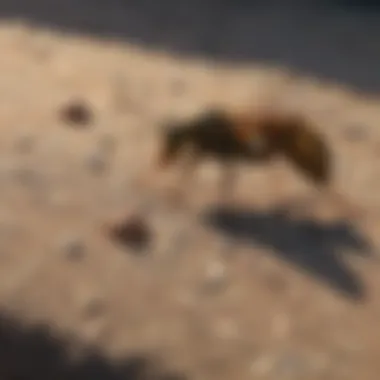
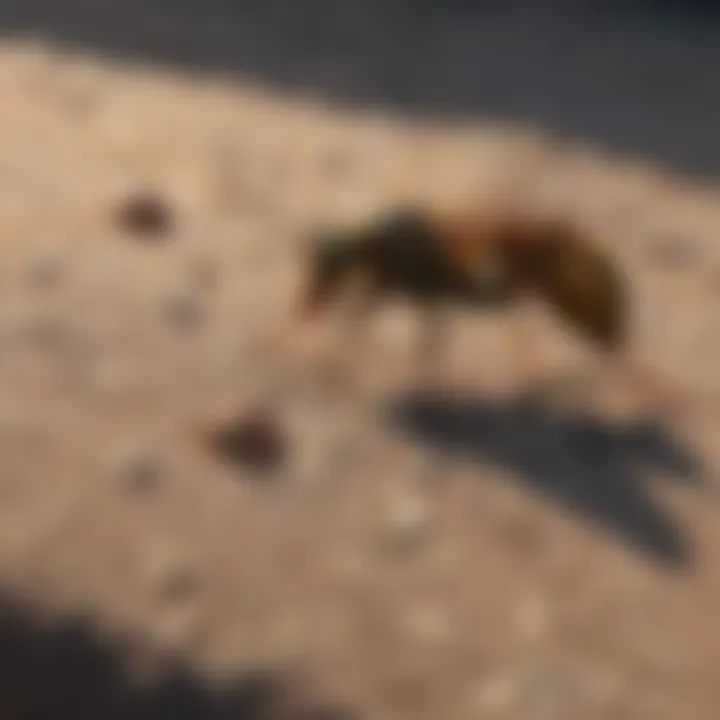
Identifying wasp nests is crucial for effective wasp management. Knowing where to look and understanding the characteristics of these nests can massively influence the success of removal efforts. An early identification might prevent aggressive responses from wasps and reduce the danger of stings. Moreover, it allows homeowners to plan their actions better, whether opting for DIY solutions or seeking professional assistance.
Understanding the nuances of wasp nests also provides insights into wasp behavior and nesting habits. This knowledge can enhance your safety and efficiency in dealing with these insects.
Common Locations for Nests
Wasp nests can be found in various environments. Here are common locations to observe:
- Tree branches: Wasps often build their nests in the shade, away from direct sunlight. Tree branches provide a natural platform.
- Eaves of buildings: The sheltered areas at the edges of roofs are ideal for nesting.
- Underground: Some wasp species prefer to dig into the ground, creating nests often overlooked.
- Sheds and garages: Areas that are seldom disturbed are attractive to wasps for nesting.
When scouting for wasp nests, always approach with caution. Before taking any action, make sure to confirm the presence of the insects. Look for aerial activity around the suspected areas.
Characteristics of Wasp Nests
Understanding the characteristics of wasp nests aids in correct identification:
- Structure: Wasp nests are typically made of chewed wood fibers mixed with their saliva, creating a paper-like material.
- Shape: Many nests have a distinct oval or spherical shape, with multiple tiers of hexagonal cells inside.
- Size: The size can vary significantly depending on the species and age of the nest, ranging from a small fist-sized structure to large nests that are dozens of inches in diameter.
- Color: Most nests are light brown to grayish in color, blending in with the surrounding environment.
Identifying the unique characteristics of wasp nests is imperative in planning for their removal. Being observant can help avoid unnecessary confrontations.
Overall, recognizing where to find wasp nests and how to identify them forms the foundation for practical and safe removal strategies. This knowledge empowers homeowners and pest control professionals to act effectively.
Safety Precautions for Wasp Removal
Wasp removal can be a necessary task for homeowners looking to protect themselves and their families from potential stings. However, this process involves certain risks that must be addressed to ensure safety. This section discusses the importance of safety precautions in the context of wasp removal, aiding readers in navigating the often precarious encounter with these insects. By prioritizing safety, individuals can minimize the likelihood of bites and other injuries while performing removal tasks.
Personal Protective Equipment
Personal protective equipment (PPE) is crucial when considering wasp removal. The following items can help mitigate risks during the process:
- Bee suit or thick clothing: Wearing clothing that covers most of the body reduces exposed skin, lowering the risk of stings. A bee suit specifically designed for this purpose offers the best protection.
- Gloves: Sturdy gloves serve as an additional barrier against stings. It is vital to ensure they are thick and durable.
- Goggles or face shield: Protecting the eyes is essential during wasp removal. Goggles shield eyes from potential attacks, preventing painful injuries.
The proper use of PPE creates a safer environment when dealing with wasps and contributes to the overall success of removal attempts.
Assessing Risk Factors
Evaluating risk factors before engaging in wasp removal is essential. This step helps identify potential dangers and prepares individuals for possible outcomes. Key considerations include:
- Location of the nest: If the nest is near a frequently used area, such as a patio or garden, the risk of encountering aggressive wasps increases significantly.
- Species of wasp: Certain species exhibit more aggressive behavior than others. Hornets, for example, are more prone to defend their nests aggressively compared to other wasps. Understanding which type of wasp you are dealing with will help in planning an appropriate removal strategy.
- Weather conditions: Windy or rainy days can increase the agitation level of wasps, making them more aggressive. It is wise to choose calm, dry days for removal tasks.
- Allergies: Individuals with known allergies to wasp stings must exercise extreme caution or consider seeking professional help if an infestation is present.
Considering these factors before starting the removal process enables individuals to formulate a strategic plan that enhances safety and efficiency in addressing wasp issues.
Chemical Methods for Wasp Removal
Wasp removal can often warrant the introduction of chemical methods, which tend to provide swift results when done correctly. Understanding the effectiveness of these chemicals is crucial for homeowners, as these methods can eliminate nests quickly and reduce the risk of aggressive behaviors from wasps defending their territory. When deciding on chemical methods, it is essential to consider the various types of insecticides available and their safe application. This section will delve into the different insecticides, their application techniques, and the necessary safety precautions for using these chemicals.
Insecticides: Types and Application
Selecting an appropriate insecticide is foundational for effective wasp removal. Various products exist, designed specifically for targeting wasps. The most common types of insecticides for wasp control include:
- Aerosol sprays: These are convenient and provide a direct stream aimed at the nest. They are generally effective and can reach nests located high up.
- Powders: Wasp dust can be applied to the nest entrance. The wasps carry the powder back into the nest, increasing exposure to the entire colony.
- Baits: These attract wasps and subsequently eliminate them upon ingestion. Baits are effective but require patience as they work slower than sprays.
Application of these insecticides typically requires the user to follow the manufacturer’s instructions closely. When using aerosols, one should stand at a safe distance, ideally 10-15 feet from the nest. For powder applications, wear protective gear and apply during the evening when wasps are less active. Ensure you protect any surrounding plants or animals from exposure to the chemicals.
Safety Guidelines for Chemical Use
Using chemical methods for wasp removal is not without risks. Safety measures are essential to minimize the possibility of adverse outcomes for both humans and the environment. Here are critical guidelines to follow:
- Wear Protective Equipment: Always use gloves and face protection. A long-sleeved shirt and pants are advisable to cover any exposed skin.
- Read Labels Carefully: Each product comes with its own instructions, warnings, and application guidelines. Following these is crucial for safety.
- Avoid Windy Days: Wind can cause the chemicals to drift away from the targeted area, increasing exposure risks to bystanders.
- Keep Pets Away: Ensure pets and children are kept a safe distance during application and for a few hours after until the area is declared safe.
- Store Products Properly: After use, store the remaining insecticides in a safe location to prevent accidental exposure.
"Using chemicals for wasp removal requires diligence and care. Safety should always be the top priority, ensuring the health of the environment and personal safety."
Natural and Eco-Friendly Wasp Removal Solutions
In recent times, the focus on sustainable and environmentally friendly pest control has grown significantly. Natural and eco-friendly wasp removal solutions offer alternatives that minimize harm to the ecosystem while effectively managing wasp problems. These solutions attract concern for human health and the environment. They tend to avoid the risks associated with chemical insecticides, which can have lingering effects on non-target species, including beneficial insects.


Homeowners are increasingly interested in using methods that will help maintain the ecological balance, as well as reduce their carbon footprint. In this section, we delve into these methods, emphasizing their significance, advantages, and the considerations to bear in mind when selecting eco-friendly strategies for wasp removal.
Homemade Repellents
Creating homemade repellents for wasps is not only a practical approach but also a straightforward way to handle the issue without resorting to harsh chemicals. Various ingredients can be combined to produce effective repellents, which are safe for humans and pets alike.
Common ingredients for homemade wasp repellents include:
- Peppermint oil: This essential oil has a strong scent that masks food odors, reducing attraction for wasps.
- Vinegar: This common household item acts as a deterrent and can be used in traps.
- Dish soap: When mixed with water, dish soap can effectively suffocate wasps if sprayed directly.
To create a simple repellent, combine two cups of water, one cup of vinegar, and a few drops of peppermint oil in a spray bottle. Shake well and apply it around the areas where wasps are a problem. This method can help establish a wasp-free zone without the harmful effects of commercial products.
Using Traps Effectively
Traps are another practical and eco-friendly method for managing wasp populations. They provide a means to capture wasps with minimal risk to other wildlife. By using traps strategically, homeowners can significantly reduce wasp activity around their property.
A few effective trap designs include:
- Homemade traps: Constructing traps using plastic bottles can be a simple and cost-effective solution. Cut the top off a 2-liter bottle, invert it, and place bait inside, such as sugar water or fruit juice, to lure the wasps inside.
- Commercial traps: There are eco-friendly commercial traps available, often made from biodegradable materials. Look for options that are non-toxic and specially designed for wasps.
When deploying traps, it's best to position them away from high-traffic areas like porches and patios to attract wasps away from outdoor living spaces.
"Utilizing traps effectively allows for population control without using dangerous chemicals, making it a favorable option for eco-conscious homeowners."
Timing Wasp Removal
Effective wasp removal requires careful consideration of when to act. The timing can greatly influence the success of your approach. Wasps, like many other pests, exhibit specific behaviors depending on the season and time of day. Understanding these patterns can lead to more successful outcomes in removal efforts.
Both environmental factors and wasp activity levels will come into play when planning your removal strategy. Notably, different seasons and times of day present distinct opportunities and challenges. Choosing the right moments to engage in wasp removal can minimize risks and enhance effectiveness.
Best Seasons for Removal
Wasps typically follow a seasonal life cycle that informs the best times for their removal. Spring marks the beginning of wasp activity when queens emerge from hibernation and start new nests. During this time, nests are small, making it the least challenging phase for removal. Fewer wasps mean lower risk, and early intervention can prevent larger infestations.
Summer is the peak season for wasp activity. Nests become larger and more populated, which increases removal difficulty. The aggression level of wasps also rises. Using removal techniques during this phase may lead to heightened risk unless significant precautions are taken.
As autumn arrives, wasp behavior will shift again. They tend to become more docile as food sources dwindle but can still be protective of their nests. It is crucial to monitor nests in late summer to evaluate if removal is still advisable as the season transitions.
Ideal Times of Day for Action
Timing during the day can also affect the success rate of wasp removal endeavors. Early morning or late evening are considered ideal times for such operations. During these hours, wasps are less active, which reduces the potential for aggressive encounters.
In contrast, approaching nests during the middle of the day exposes individuals to greater danger. Wasps are most active and alert, particularly on sunny days. Avoiding these peak periods can make removal safer and more efficient.
Remember that approaching a nest at the wrong time could result in unwanted stings and increased tension in the environment.
Optimal timing for wasp removal reflects a synthesis of both seasonal awareness and awareness of daily activity patterns. Homeowners should actively plan around these factors when undertaking wasp management. This strategic approach not only protects individuals but also enhances successful removal outcomes.
Post-Removal Considerations
After successfully removing a wasp nest, it is crucial to consider the post-removal stage. This phase involves both prevention and monitoring strategies that significantly enhance your efforts in wasp control. Effectively managing post-removal considerations can ensure that your living space remains comfortable and free from these pests in the future. Here, we will explore two main aspects: preventing future infestations and monitoring any remaining wasp activity.
Preventing Future Infestations
Preventing new wasp colonies from establishing in and around your home requires diligent efforts. This starts with identifying and mitigating potential attractants. Here are some effective strategies:
- Remove Food Sources: Wasps are drawn to accessible food, especially sugary substances and proteins. Regularly clean outdoor dining areas and tightly cover trash bins. Consider storing pet food inside when not in use.
- Seal Entry Points: After removal of the nest, inspect your property for gaps and crevices. Sealing cracks around windows, doors, and the foundation can help prevent wasps from entering your home.
- Regular Maintenance: Keep your yard tidy by trimming branches and shrubs. Overhanging trees and bushes can serve as nesting sites close to your living space.
- Use Decoys: Hanging fake wasp nests can deter new colonies from settling nearby, as wasps tend to avoid areas where other nests exist.
The benefits of these preventive measures are manifold. Not only do they reduce the likelihood of infestations, but they also foster a more pleasant environment for you and your family.
Monitoring Remaining Activity
Even after removing a nest, vigilance is important. Monitoring for any remaining wasp activity can help in addressing issues before they escalate. Here's how to effectively monitor for wasp presence:
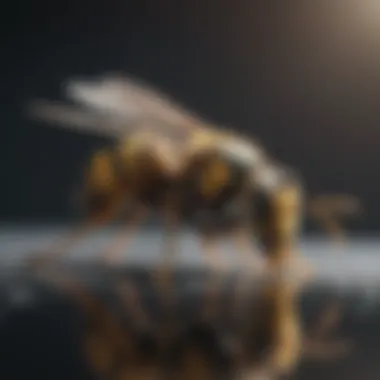
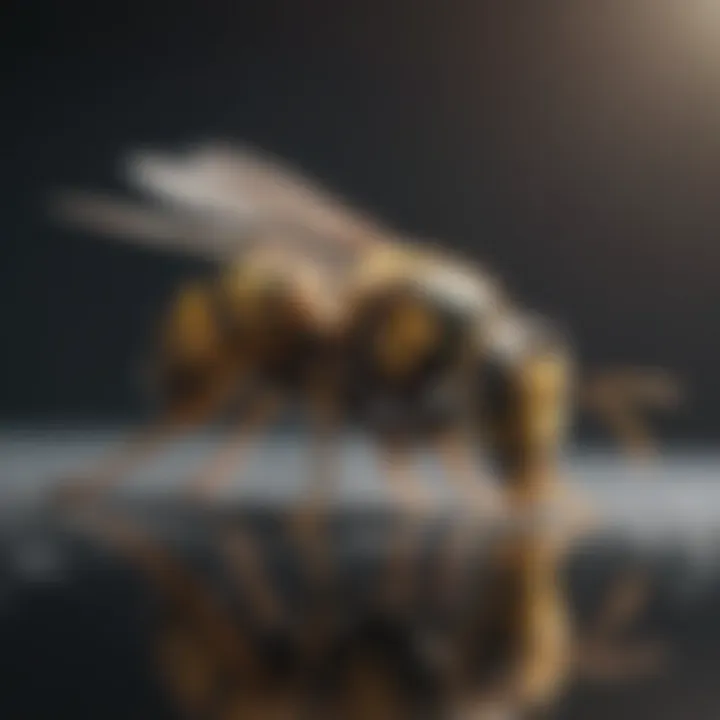
- Regular Checks: Perform weekly inspections of areas where wasps may linger, such as under eaves, in attics, or secluded corners of your yard. Look for signs such as increased flying activity or new nests being built.
- Set Up Traps: Placing wasp traps near suspected areas can help capture any lingering wasps. Observing the traps can provide insights into the level of activity and area density.
- Document Findings: Keep a log of your observations. This can help identify patterns and enable you to take action more promptly if necessary.
"Regular monitoring after wasp removal is essential in maintaining a wasp-free home. It allows you to catch any potential issues early and react accordingly."
When to Seek Professional Help
When dealing with wasps, there may come a time when the situation escalates beyond your control. Calling in professionals can be vital for a successful resolution. This section discusses specific indicators that suggest it is time to seek expert assistance and highlights the benefits of doing so. It also covers personal assessments regarding your own capabilities in handling wasp issues.
Signs of a Large Infestation
Identifying a large infestation of wasps is critical before considering your removal options. Here are some clear signs that point to such a situation:
- Increased Wasp Activity: If you notice many wasps flying around your home, particularly in late summer or early autumn, this could indicate that a nest is close by or that it has been well established.
- Visible Nests: Seeing multiple nests in your vicinity is a clear sign of a larger problem. Nests tend to grow larger over time, which increases the risk of aggression from the wasps.
- Frequent Wasp Sightings: If you regularly encounter wasps when sitting outside or during outdoor activities, this can indicate that nearby nests are increasing in number.
- Aggressive Behavior: If the wasps seem particularly aggressive or territorial, this is a strong sign that the nest is large. Aggressive wasps can pose a danger to you and your family.
If these signs are present, it is wise to consider professional intervention. Attempting to manage a large infestation without the right tools and knowledge can lead to dangerous situations.
Evaluating DIY Limitations
Before launching into a DIY removal effort, reflect on several factors that showcase your limitations. On some occasions, home remedies and traps are insufficient.
- Experience Level: Consider your comfort level dealing with pests. If you have no previous experience or have had unsuccessful attempts in the past, this might indicate a need for professional help.
- Safety Concerns: Assess your health conditions. Individuals with allergies to wasp stings should avoid treatment attempts. Wasps can become aggressive when they feel threatened, and a large accumulation can complicate dangers.
- Access Issues: If nests are located in hard-to-reach spaces, like attics or high tree branches, you may lack the equipment to access these locations safely.
- Severity of the Problem: If you observe heavy wasp traffic and multiple nests forming, it becomes harder to contain the issue yourself.
Ultimately, understanding your limitations enables you to better assess the situation and determine whether a professional offers the best approach.
Seeking professional assistance can often save time, reduce risks, and provide effective long-term solutions.
Case Studies and Real-World Experiences
Case studies and real-world experiences offer valuable insights when it comes to effective wasp removal strategies. These narratives do not just recount past situations; they also provide empirical evidence on what methods work best in specific circumstances. By understanding different approaches and outcomes, homeowners can make well-informed decisions tailored to their unique situations.
Successful DIY Removal Attempts
The realm of do-it-yourself wasp removal has seen a range of successes and challenges. Many homeowners find themselves tackling nests during the warmer months, often motivated by the instinct to protect their outdoor spaces. These individuals share common strategies that have yielded positive results:
- Timing: Successful attempts frequently occur at dusk or dawn when wasp activity is lower. This timing reduces the chances of aggressive encounters, allowing for safer removal.
- Homemade solutions: Some homeowners have utilized homemade traps. These traps often consist of a simple mixture of sugar water, vinegar, and dish soap placed in strategic areas away from living spaces. The allure of sweetness draws wasps in, while the soap prevents escape.
- Using existing insecticides: Families that retain store-bought insecticides report effective results. Aiming directly at the nest, following all safety guidelines, maximizes impacts with minimal risk.
While many DIY attempts yield success, there are notable considerations:
- Vigilance: Observing wasp behavior before and after removal attempts is crucial. Regular checks help gauge if the strategy has truly worked.
- Adaptation: Successful individuals adapt their methods based on experiences. If one method fails, modifications are necessary to find a suitable alternative.
"Understanding your environment will aid any homeowner in distinguishing temporary remedies from permanent solutions."
Lessons from Professional Exterminators
Professional exterminators bring expertise that often makes them invaluable in wasp management. There are key lessons that can be gleaned from their methods:
- Thorough Inspection: Exterminators conduct detailed inspections of the premises prior to taking any action. They identify areas of previous infestation and potential entry points, ensuring that their approach is tailored to the specific situation.
- Comprehensive Treatment: Unlike DIY methods, professionals apply a layered approach. They may combine chemical and non-chemical strategies, ensuring immediate removal of the wasps while minimizing future risks.
- Continued Monitoring: Experienced exterminators often return to assess the situation. Their guidance provides peace of mind, coupled with actionable advice on preventive strategies.
Furthermore, professionals advocate prioritizing safety above all. Proper protective gear is essential not just during application but also as a standard practice during the assessment phase.
In summary, real-world cases of wasp removal form a vital component of understanding effective strategies. Combining personal experiences with professional guidance leads to better-informed decisions, ultimately enhancing safety and effectiveness in wasp management.
Closure
Effective wasp removal strategies contribute significantly to maintaining a safe living environment. The methods discussed in this article provide homeowners with practical tools and approaches to manage wasp populations. Understanding the specific behaviors of wasps, their nesting patterns, and the ecological role they play can also inform more effective and responsible removal practices.
Reflecting on Effective Practices
Effective removal practices hinge on a combination of safety and efficiency. Homeowners should prioritize local safety and personal protection. Utilizing personal protective equipment reduces risks during the removal process. Understanding optimal times for action can result in a higher success rate, minimizing encounters with aggressive wasps.
It is essential to acknowledge that various removal methods—whether chemical or natural—each come with their own sets of advantages and disadvantages. For instance, while chemical insecticides can swiftly eliminate wasps, they may also pose risks to non-target species and the surrounding environment. On the other hand, natural solutions often require more time and patience but contribute to a sustainable pest management approach.
"Safety is key in wasp removal; a well-informed approach allows homeowners to act effectively and responsibly."
Future Trends in Wasp Control
The future of wasp control appears to be increasingly focused on environmentally friendly and humane solutions. Innovation in pest management technology is likely to lead to the development of more effective attractants and traps. As awareness of ecological impacts grows among consumers, we may see a shift towards chemical alternatives that are less harmful to beneficial insects.
Furthermore, research into natural predators or biological controls shows promise. Integrative pest management approaches that combine various strategies will probably gain traction. This paradigm not only aims to reduce wasp populations but also considers the overall health of the ecosystem where these species reside.
As trends evolve, consumer education will play a crucial role in shaping the methods adopted for wasp control. Homeowners who are equipped with the right knowledge will contribute to a balanced coexistence with wasps while ensuring their own safety.







